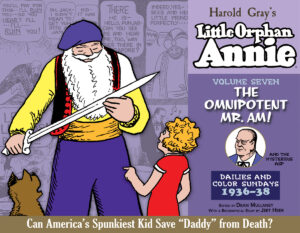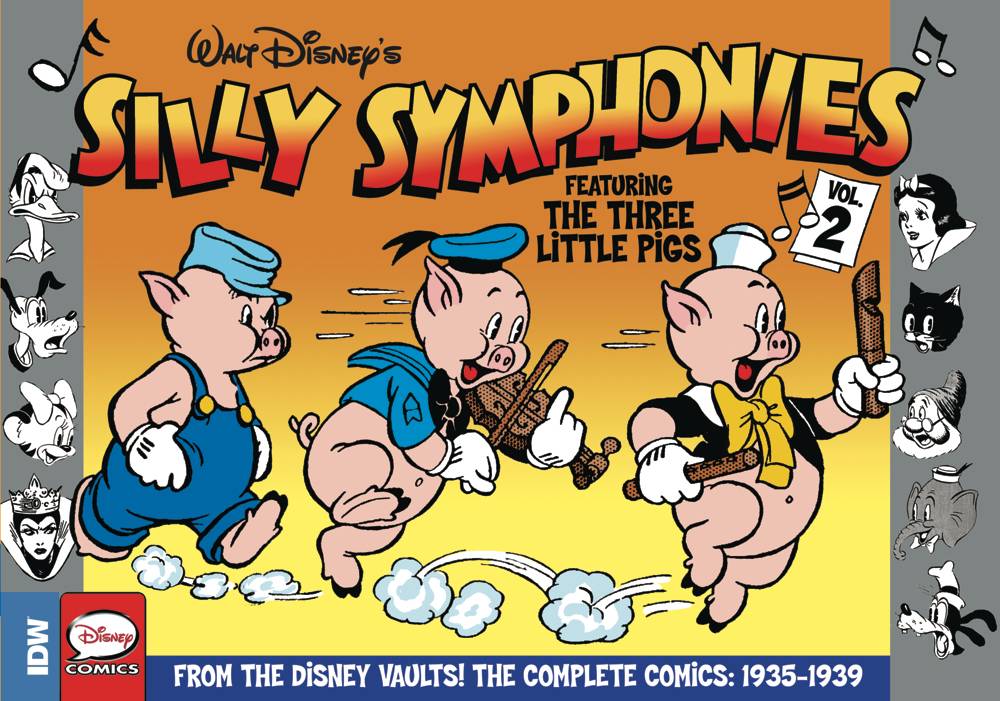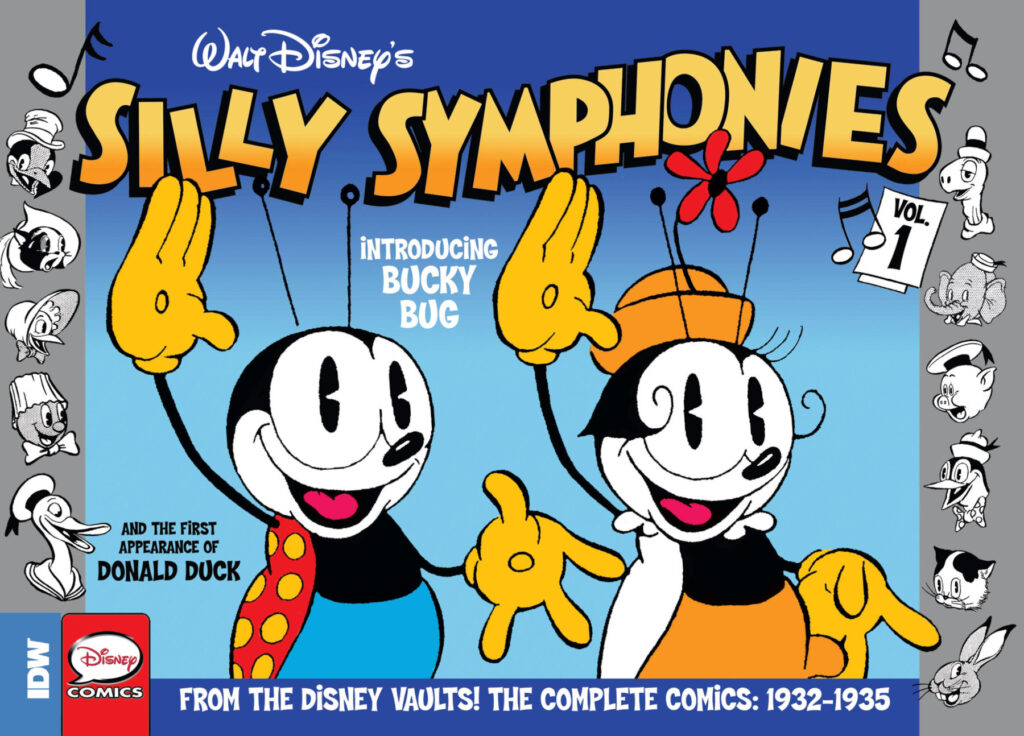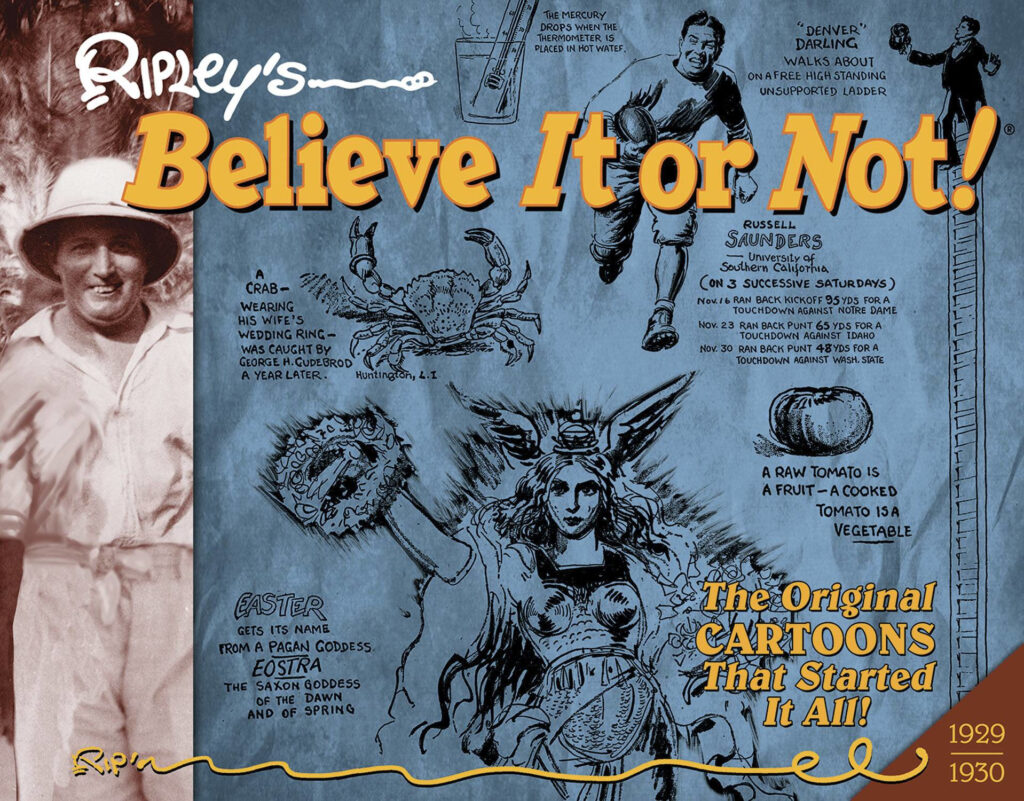Introducing two of the strip’s most incredible characters: The Asp—who has sometimes been likened to the Grim Reaper, and Mr. Am—who has been said might be a representation of the Almighty. Harold Gray is at the top of his game as he also presents the frightening villain Boris Sirob, who actually kills both “Daddy” Warbucks and The Asp. “Daddy” dead? Wait until you read this one! Includes all dailies and colour Sundays from October 1, 1936, through June 8, 1938.
- Library Of American Comics, August 2011
- ISBN 978-1-60010-995-9
- 11″ x 8.5″, 276 pages, hardcover
- $49.99 USD
- Order online: Amazon


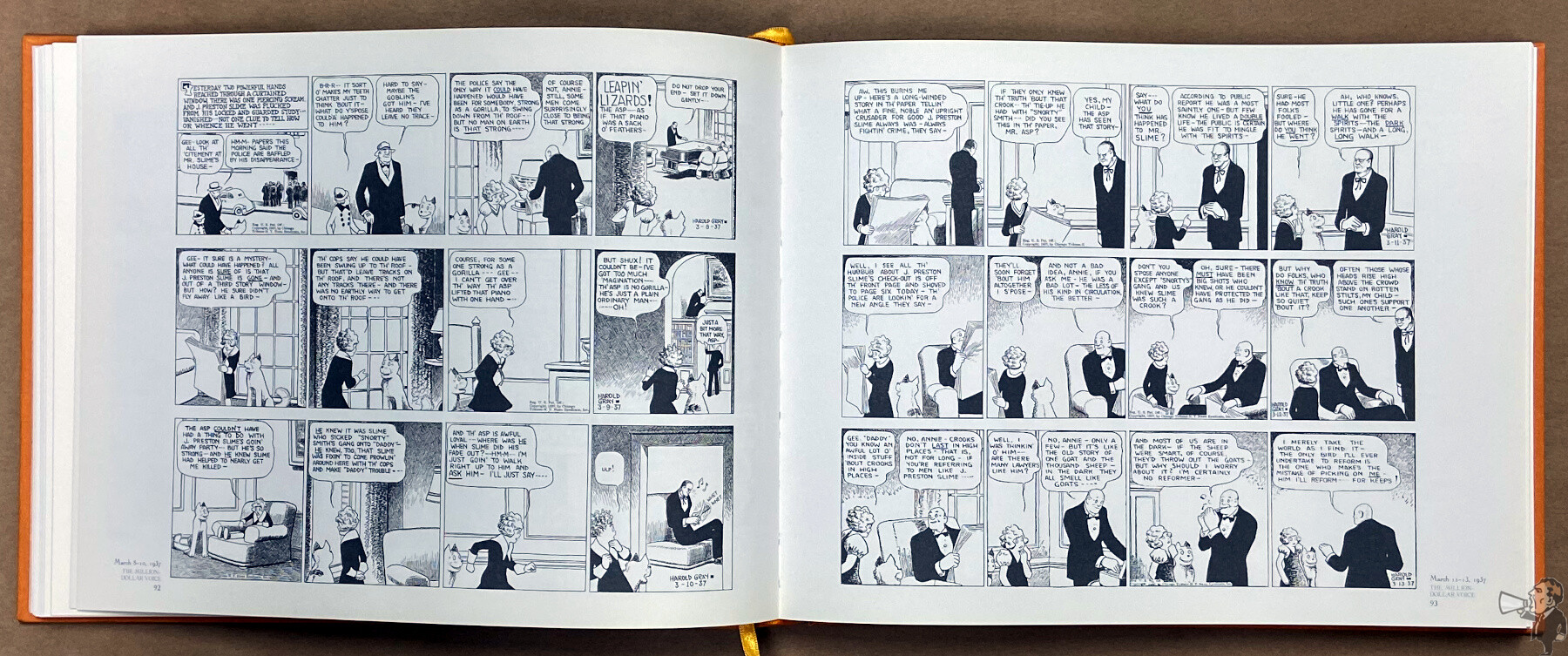
This volume makes a dramatic change to Annie’s story types, from the gritty realism of the depression to wild fantasy. It’s a bit jarring and took too much of a turn from the strip, but after these two stories, we get back to the strips’ core.
It makes sense from the perspective of where the strip was at twelve years along. Gray took the opportunity to provide a little science fiction and, spoiler alert, present a character who had lived thousands of years. Mr. Am seems to have known everyone in history, regardless of their location. But Gray uses him to observe the current time period and frames the issues of that day against his historic experience.
While Gray likes to draw out some plots, where characters are going on day after day, it goes to the extreme in this volume. I can’t remember the number of dailies that droned on about Gray’s social commentary and the ills of the world but I found myself skimming at that point.
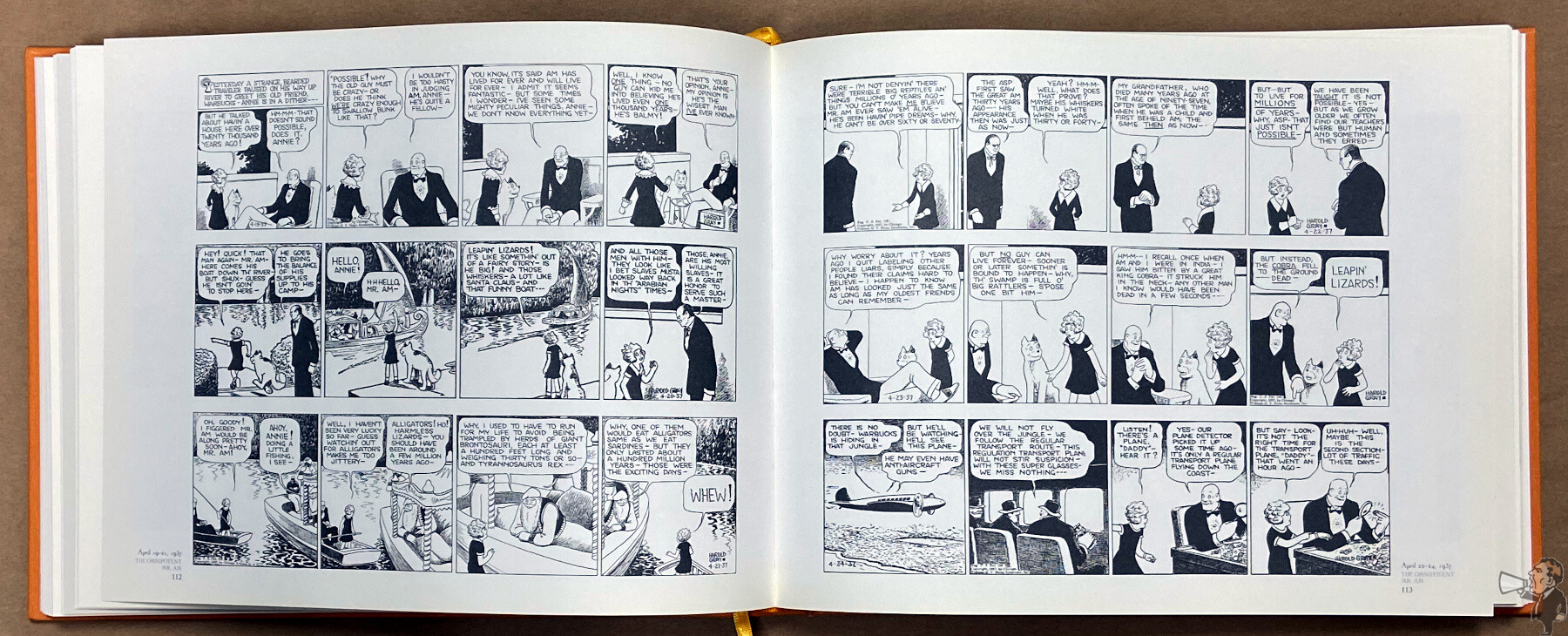
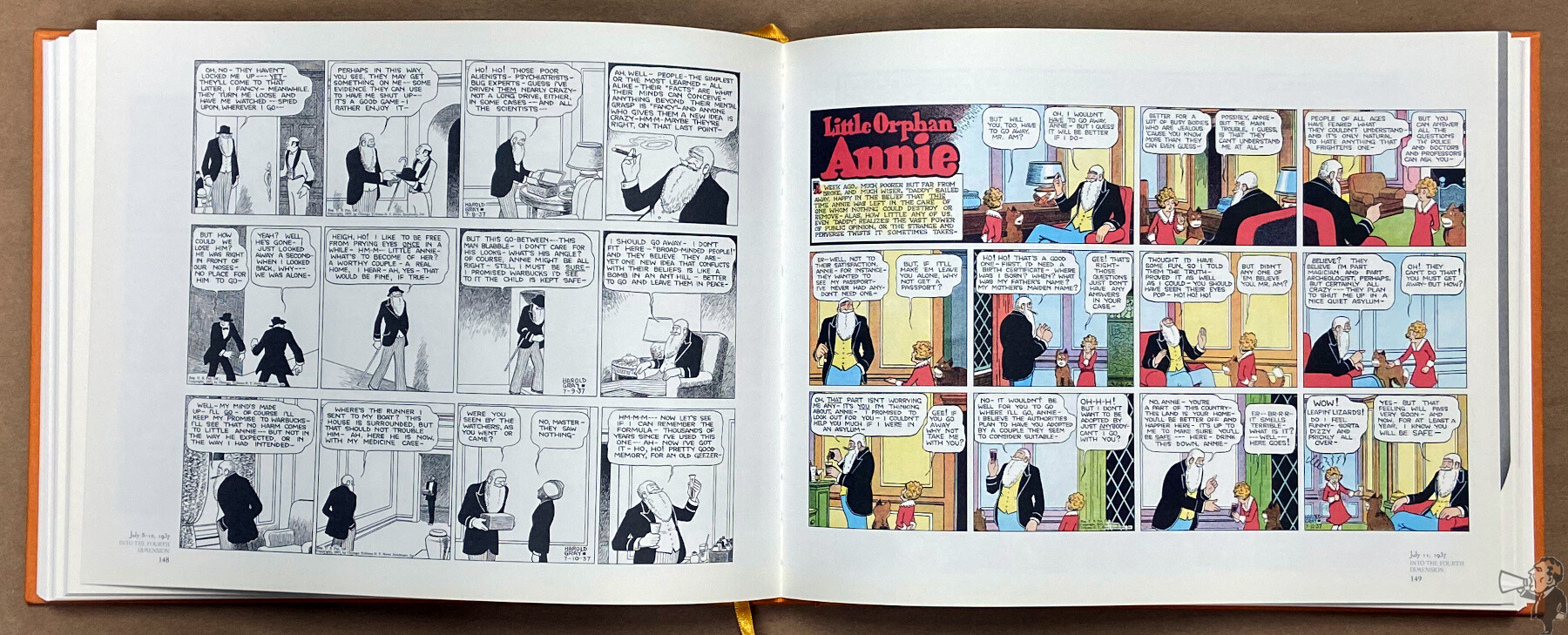
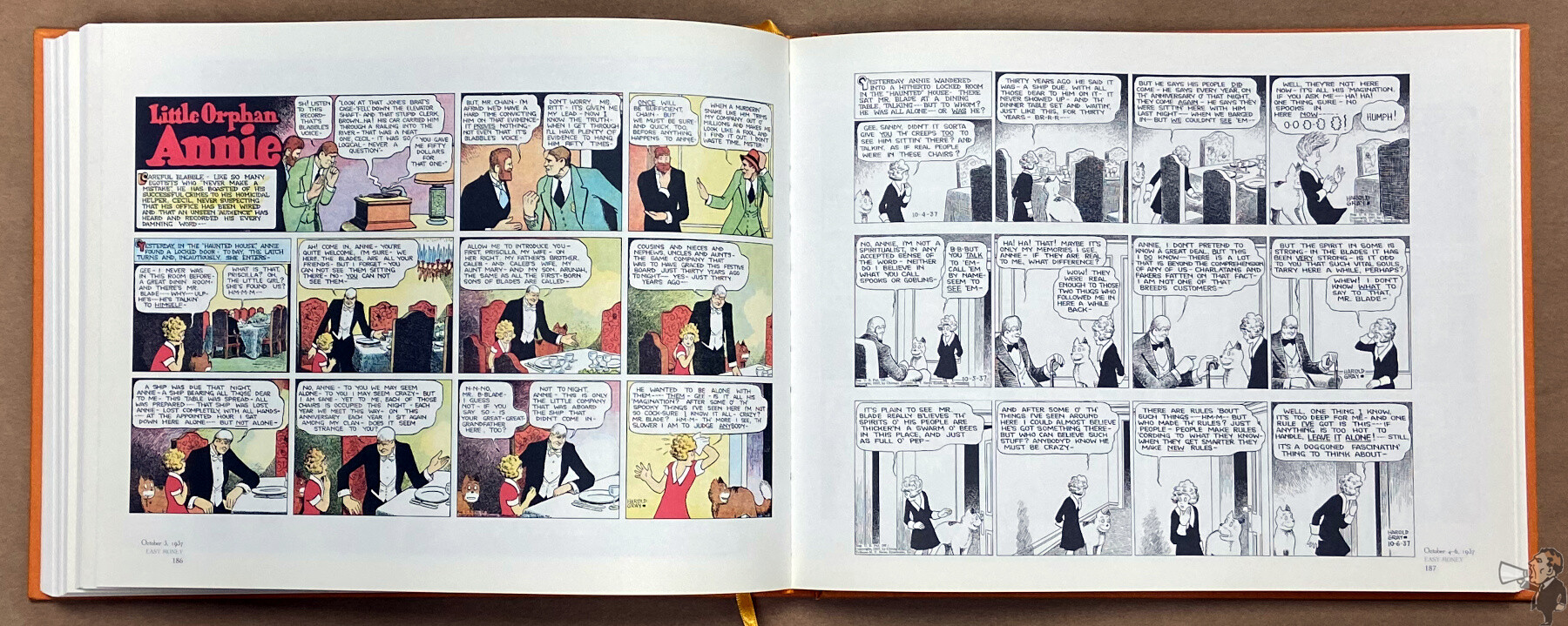
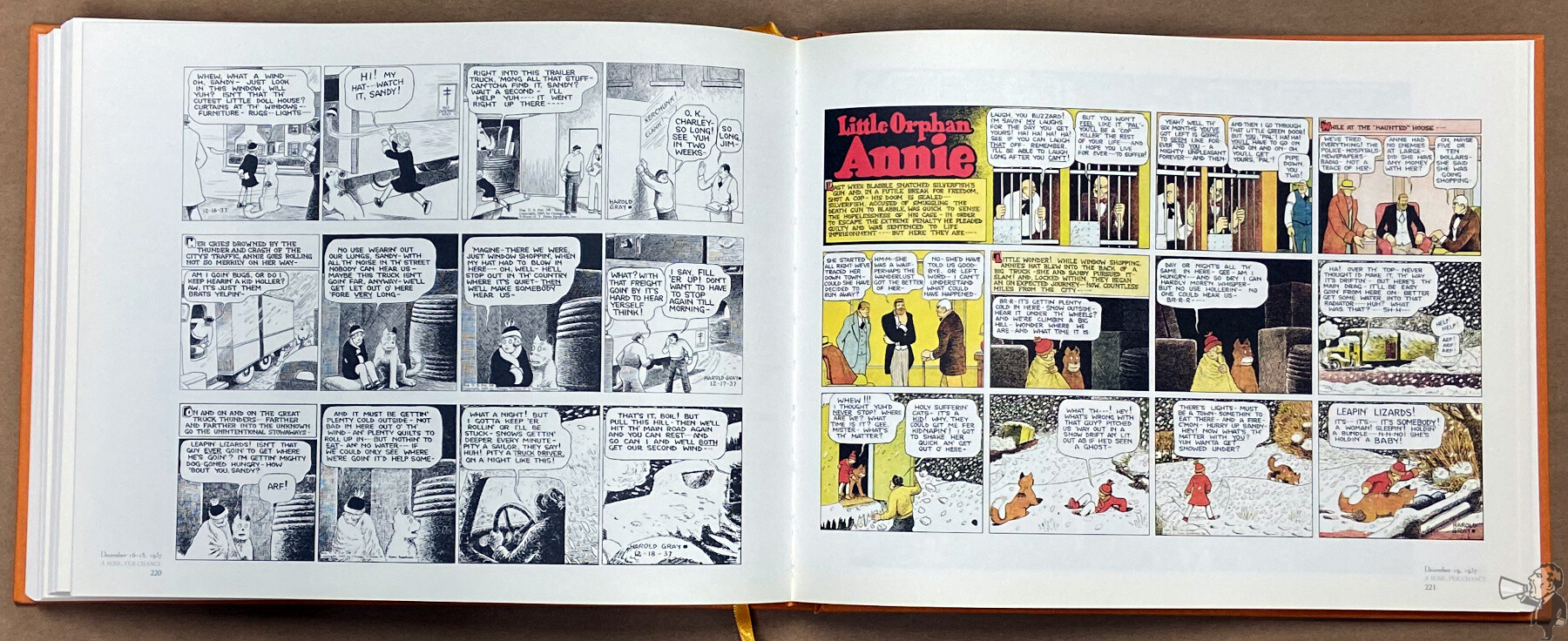
For a time Annie is again in Warbucks’ care, but she comments on July 3, 1937 “Gee-it’s th’ same old story-you’ll go away and I’ll get into a jam”. Even the main character is tired of Gray’s constant plot device to abandon Annie and have her survive and flourish through sheer determination.
Truth be told, it’s Annie’s ability to adapt and overcome that keeps me reading. Regardless of the villainy she encounters, it’s always countered by goodness and decency. As declared on the cover, Annie is America’s spunkiest kid.
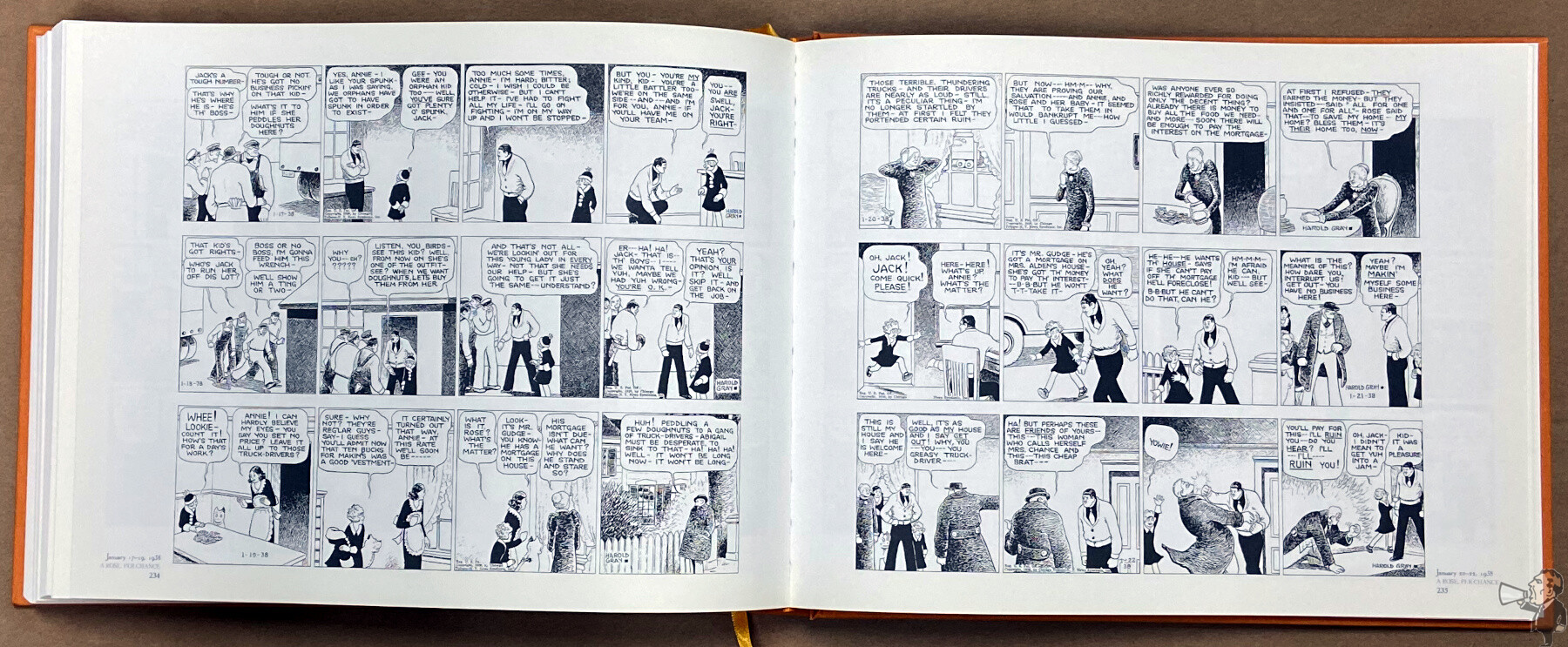
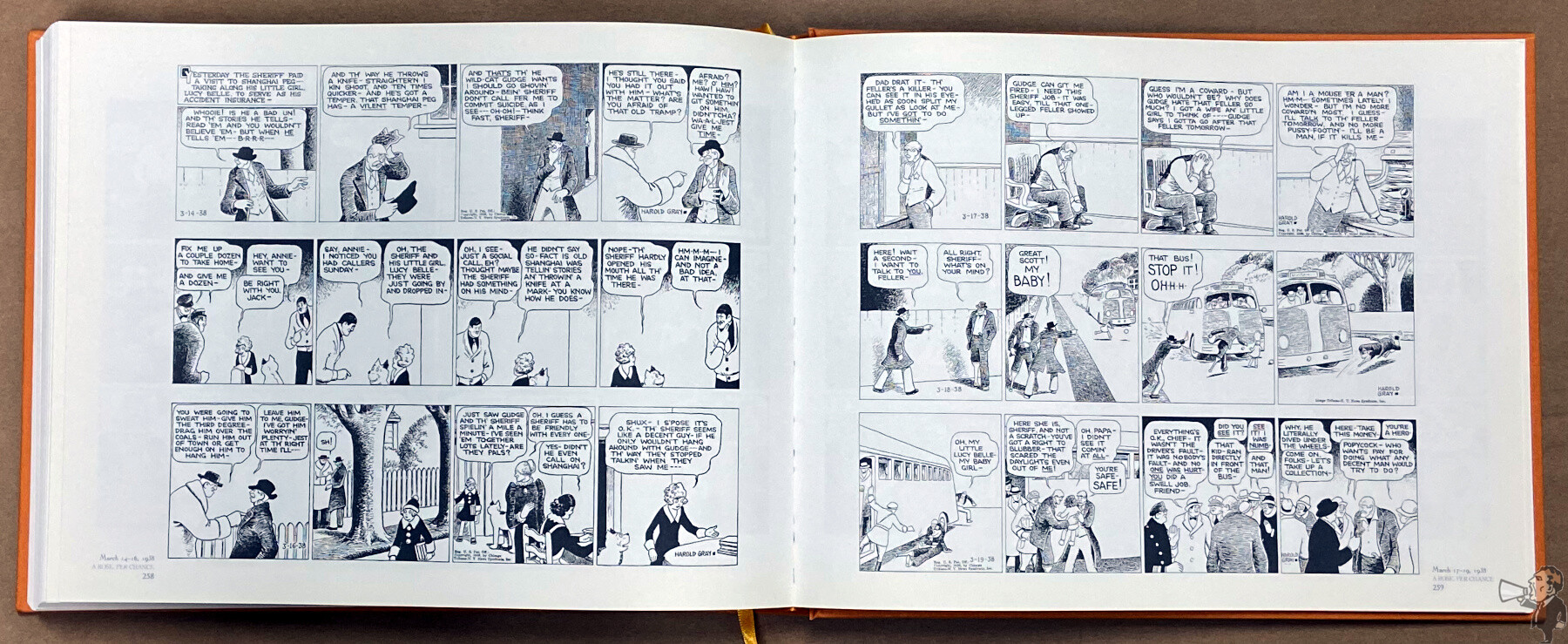
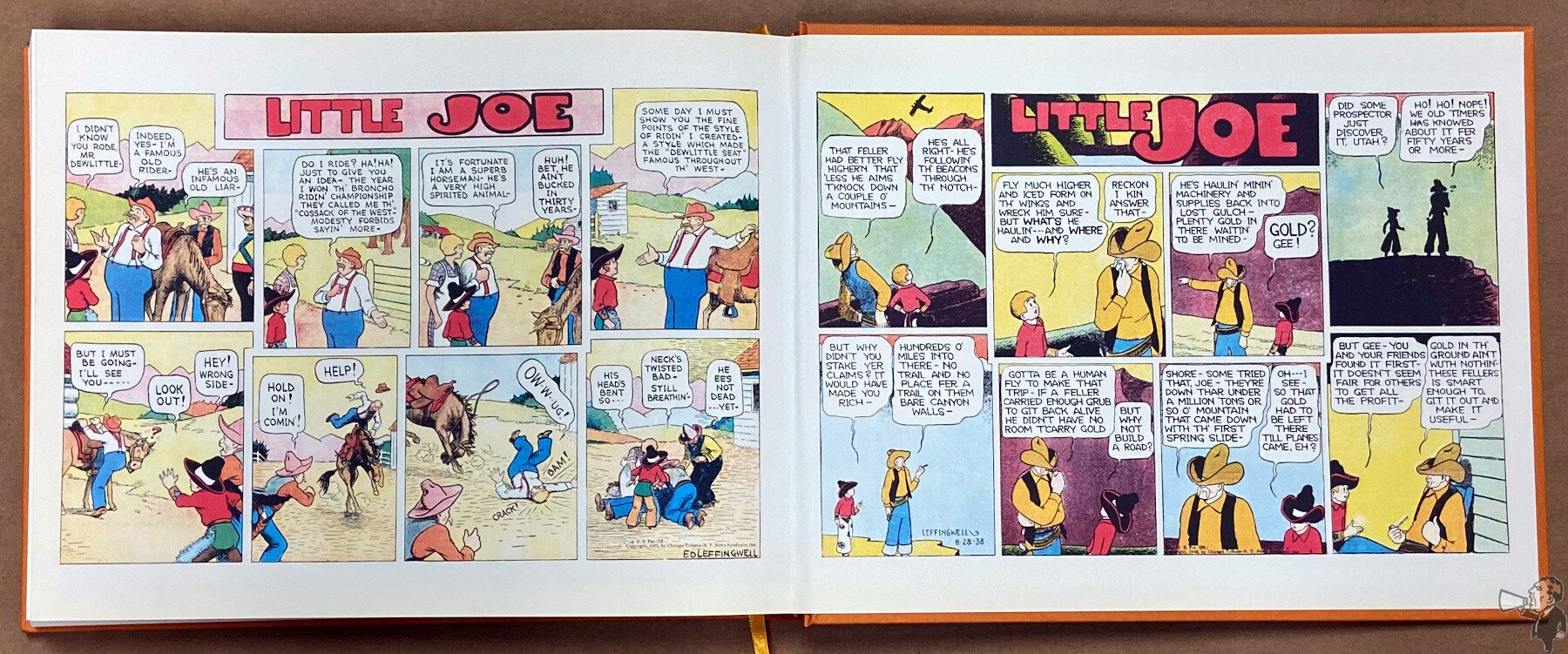
Another excellent design following this line’s established standard. The same colophon carries forward in each volume with updated information and is a beautifully designed page. Small touches repeating in every volume create a subtle unity and longevity. A solid construction of heavy matte paper in a sewn binding. And the joy that is the silk ribbon bookmark.
Heer’s essay is two-fold: Annie’s violent world and Little Joe. Another great dive into the included strips and best to read once you’ve completed the book, Heer looks at the escalating violence of the strip in the context of geopolitical events just prior to World War II.
He then turns to look at Gray’s taking over of Little Joe and continuing it for years under Leffingwell’s name. A great quick look at this strip and its origins. It took nine years for Sunday Press to bring Little Joe to the current collected editions audience.

